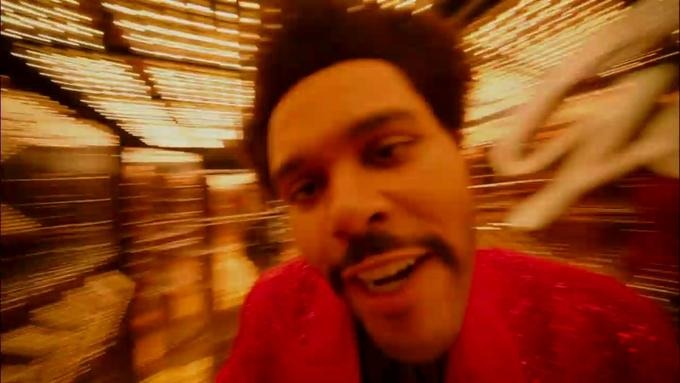JD Vance Meme Explained: Meaning, Origin And How It Went Viral
The JD Vance meme has become one of the internet’s most bizarre and unexpected political spectacles—equal parts grotesque art project and surreal commentary on digital culture. At its core, it’s a viral flood of heavily edited, often babyfied or 3D-warped images of Vice President JD Vance, pushed to absurd extremes by chronically online users who can’t stop remixing his face into new levels of chaos.
It all started in October 2024, when Republican congressman Mike Collins tweeted a hyper-edited “Chad” version of Vance with the caption “Gm.” The internet instantly ran in the opposite direction, creating bloated, childlike, and downright cursed versions of the VP’s face.
But the meme truly exploded after a February 2025 Oval Office meeting, when Vance sternly asked Zelensky if he’d “said thank you once”—a moment that launched a thousand baby-talk captions and made “Pwease say fank you” the quote of the week.
From distorted portraits and TikTok remixes to memes where everyone in the multiverse is JD Vance, the meme has grown into a genre of its own. Keep reading to see how a single face became the canvas for some of the internet’s strangest, funniest, and most chaotic creations.
What Is the JD Vance Meme?
The JD Vance Meme refers to a viral trend in which altered images of U.S. Senator JD Vance—especially digitally manipulated portraits—are used to mock, parody, or exaggerate his persona. The meme is often used to satirize political image-making and online fandoms.
The memeability of JD Vance stems from his rising political profile (as a 2025 Vice Presidential candidate), his stern photo ops, and how easily his image can be exaggerated—whether made ultra-handsome, AI-distorted, or childlike.
The Origin of the JD Vance Meme
The meme began on October 2, 2024, when Republican Congressman Rep. Mike Collins casually tweeted a edited portrait of Vice President JD Vanc with the caption “Gm.”
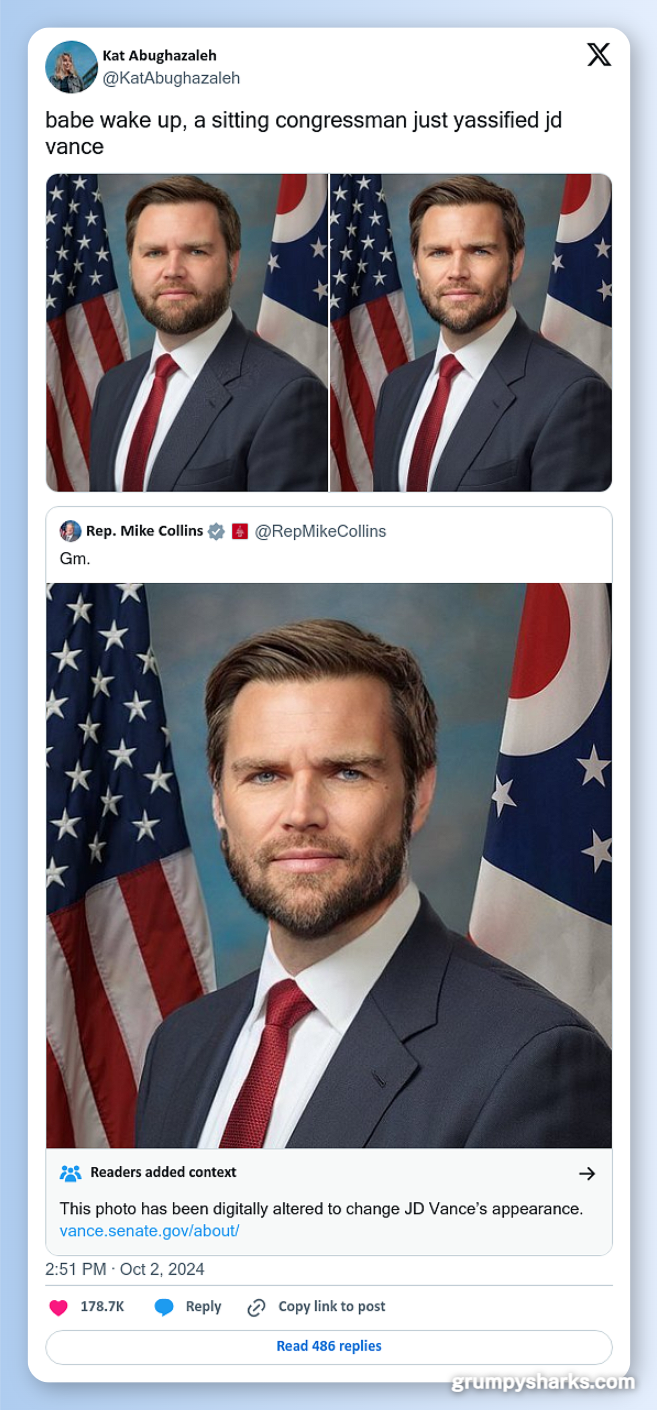
The photo exaggerated Vance’s features into a stereotypical “Chad” meme—sharp jawline, flawless skin, and a polished, stoic expression.
Instead of praise, the internet turned it into parody fuel. The tweet quickly gained traction, with over 12.3 million views, thousands of likes, and hundreds of quote tweets. It unintentionally served as the origin point for the surreal Vance meme trend.
That was the spark.
How did the meme go viral?
The turning point came during a White House meeting in late February 2025, when JD Vance—flanked by Donald Trump and Ukrainian President Volodymyr Zelensky—sharply demanded that Zelensky “say thank you” to the United States for military aid. The moment, captured in a widely circulated clip, immediately drew backlash and parody. For meme creators, it was a goldmine.
Following the incident, social media platforms, especially X (formerly Twitter), were flooded with memes and edited images of JD Vance.
Here are some notable examples:
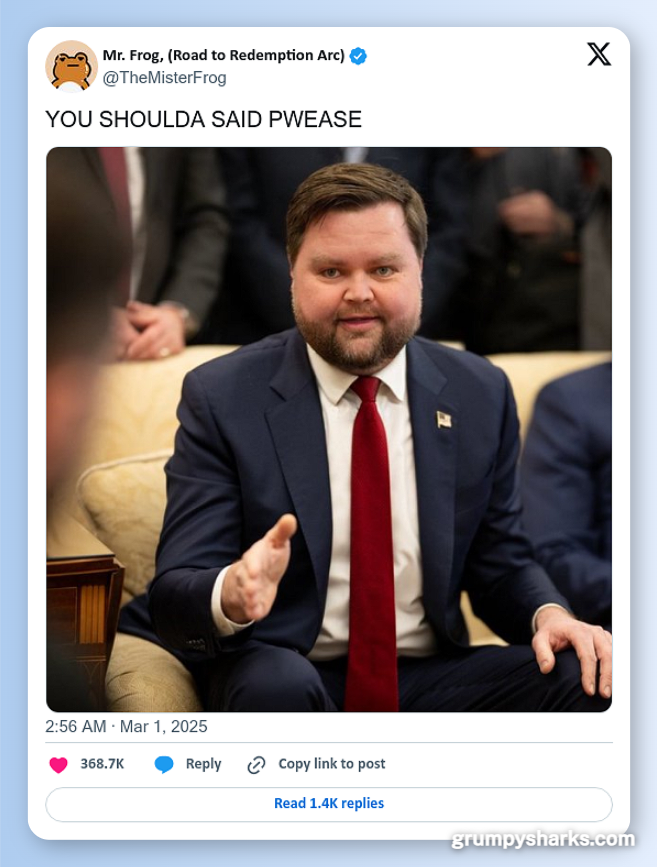
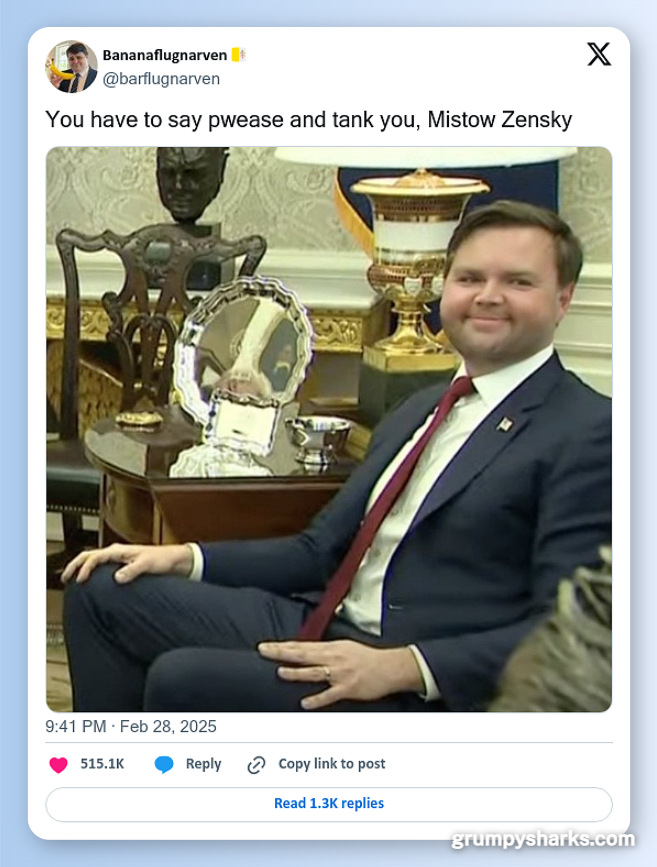
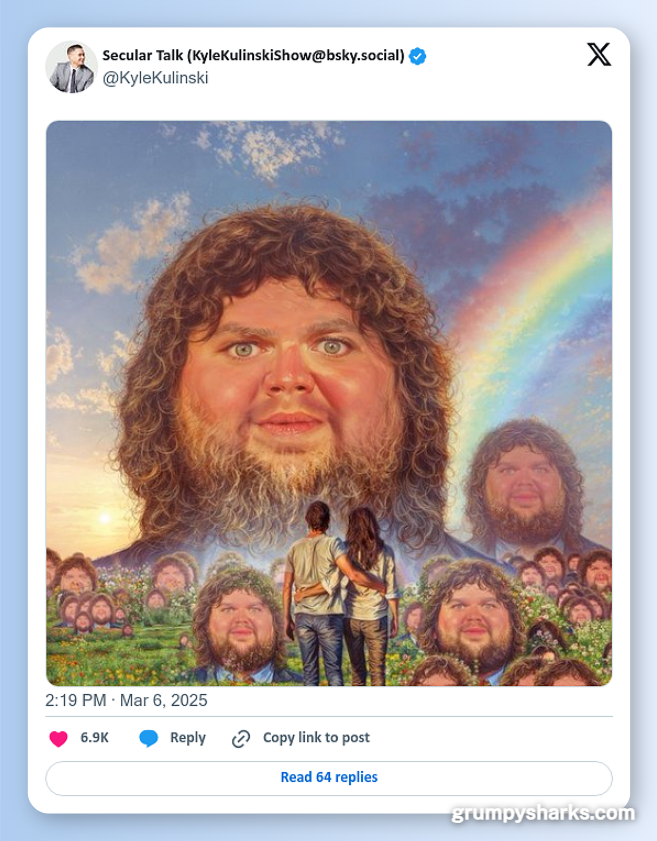

Instead of admiring the edit, users on X (formerly Twitter) immediately reacted by turning it inside out. They distorted Vance’s face into exaggerated, surreal, and often grotesque parodies.
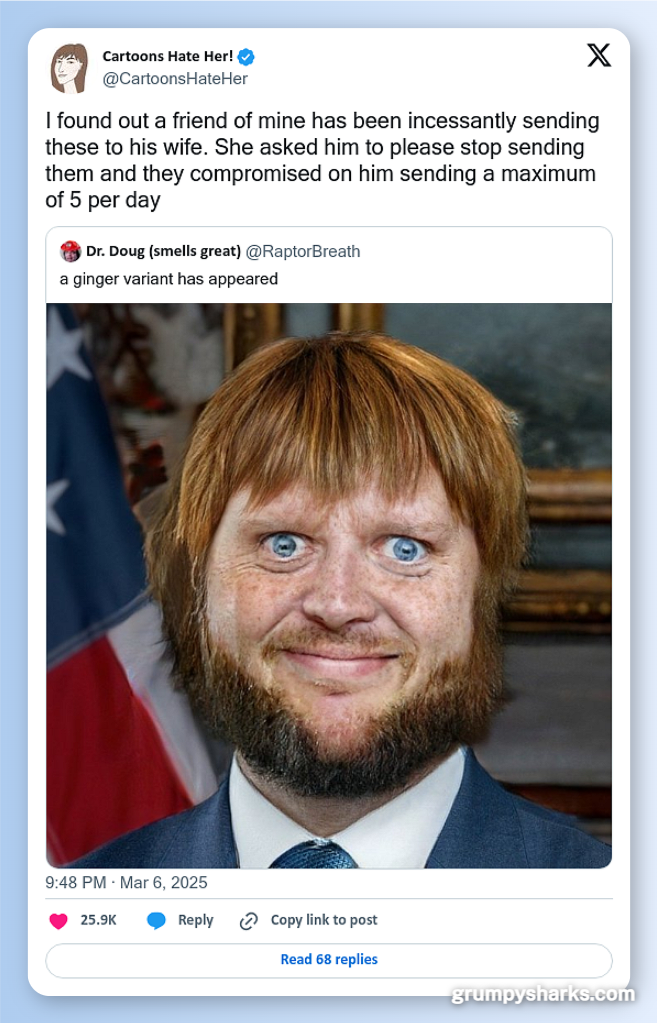
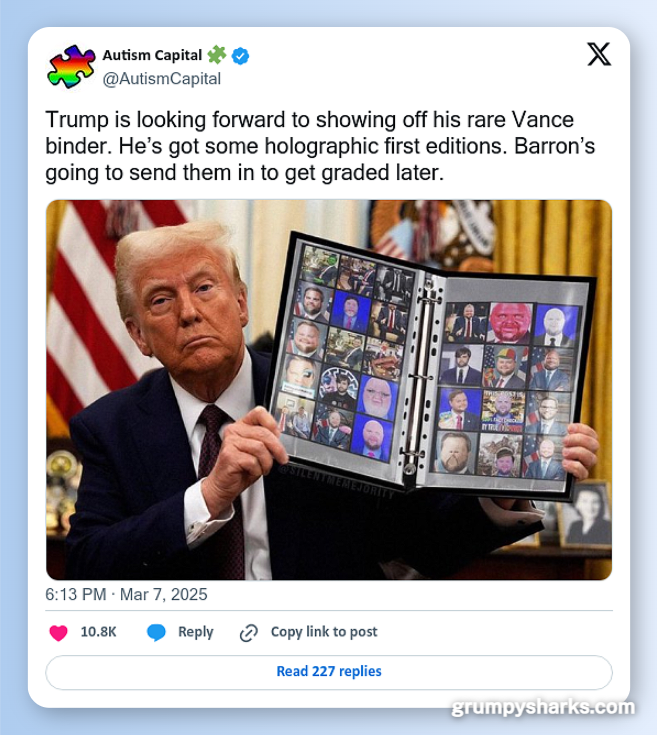
In some, he was rendered as a baby; in others, a child clutching a giant lollipop. His cheeks were puffed, his forehead ballooned, his expression warped until it no longer resembled a human face.


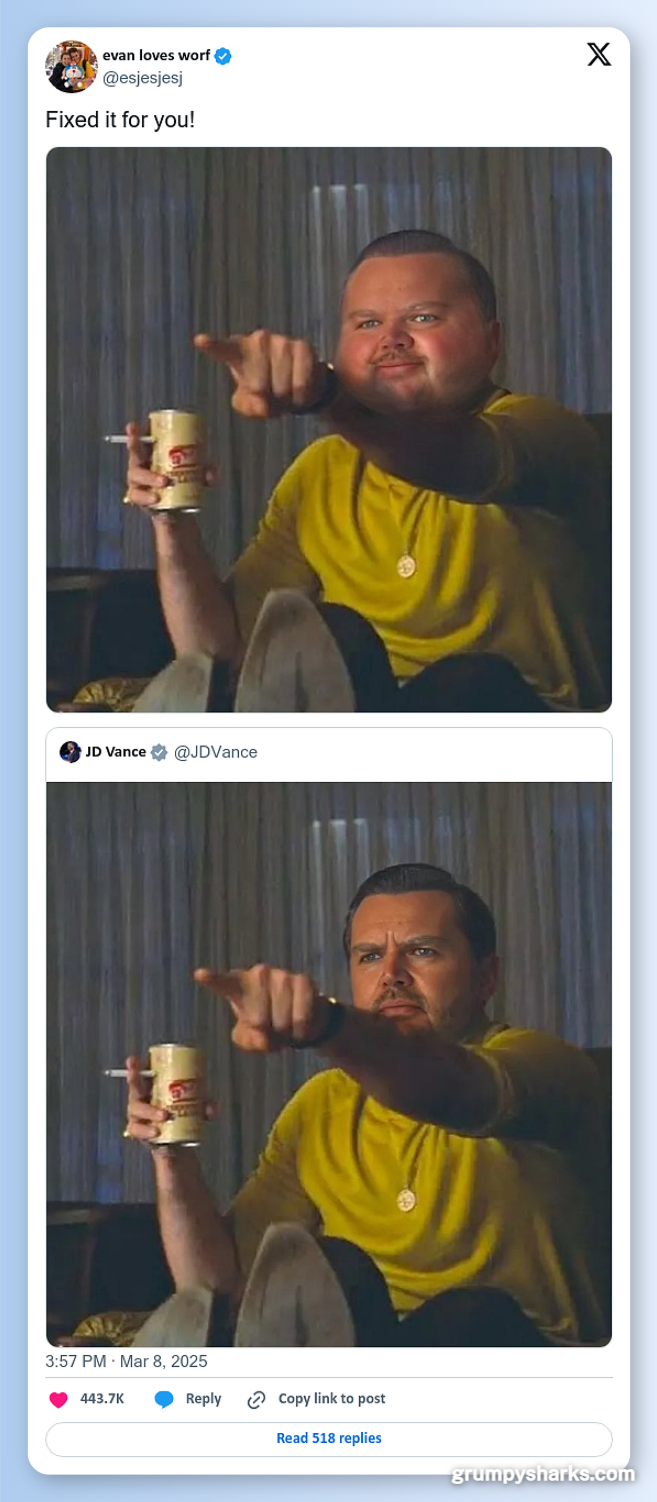
Who Is JD Vance?
JD Vance is an American politician, author, and venture capitalist. He currently serves as the Vice President of the United States (as of 2025) and rose to national prominence with his 2016 memoir Hillbilly Elegy.
The book detailed his upbringing in a working-class Appalachian family and explored issues of poverty, identity, and cultural decline in rural America. Before entering politics, he worked in the tech industry and ran a venture capital firm.
Why Did JD Vance Change His Birth Name?
JD Vance was born as James Donald Bowman. He took the surname “Vance” from his stepfather, who legally adopted him when JD was a teenager. The name change reflected a more stable period in his life, and he has spoken publicly about the positive influence his stepfather had during his formative years.
What Movie Is Based on JD Vance’s Life?
The movie Hillbilly Elegy (2020), directed by Ron Howard, is based on JD Vance’s memoir of the same name. The film stars Gabriel Basso as Vance, Glenn Close as his grandmother “Mamaw,” and Amy Adams as his mother. The movie dramatizes his turbulent upbringing in Ohio and Kentucky and his path to attending Yale Law School.
Is JD Vance’s Sister a Half Sister?
Yes. JD Vance has referred to his sister, Lindsay, as his half-sister, though they were raised together and he speaks of her with affection and closeness. They share the same mother but have different fathers. He often credits her with being a stabilizing force during his chaotic childhood.
What Has JD Vance Written?
Vance is best known for writing the memoir Hillbilly Elegy: A Memoir of a Family and Culture in Crisis (2016). The book was a bestseller and became influential in discussions about the white working class, especially around the 2016 U.S. presidential election. He has also written op-eds and essays on politics, economics, and social issues, particularly concerning rural America and conservatism.
FAQs About the JD Vance Meme
Where did the JD Vance meme originate?
The JD Vance meme originated from an edited image posted by Congressman Mike Collins in October 2024. In the photo, Vance was stylized to look like a hyper-masculine “Chad” meme—sharp jawline, airbrushed skin, intense stare.
What does “Pwease” JD Vance mean?
“Pwease” is a baby-talk version of “please,” commonly used in internet memes to mimic childlike speech.
After JD Vance demanded that Zelensky thank the U.S., users edited his face into toddler-like caricatures and paired them with exaggerated captions like “Pwease say fank you.” These edits combined political satire with absurd visual humor, and “Pwease JD Vance” quickly became a shorthand for mocking his perceived tone in that viral clip.
Did JD Vance respond to the memes?
Yes. At first, speculation swirled about whether he’d seen the memes. That question was answered when U.S. Marine and reporter Julio Rosas confirmed that Vance had seen them—and actually found them funny. Then, in early March 2025, Vance embraced the trend publicly by posting his own meme: a photo edit of himself as Rick Dalton (Leonardo DiCaprio) in Once Upon a Time in Hollywood. With that, he signaled he was in on the joke—and the internet only doubled down.
Did the JD Vance meme hurt his political career?
Surprisingly, no. While the meme started as sharp mockery, it quickly evolved into a bipartisan, post-ironic internet phenomenon. Even Vance’s supporters began participating, reframing the meme as a sign of his cultural relevance and resilience.
In fact, some argued that being meme’d relentlessly was proof he’d become a dominant political figure. His self-aware reaction also helped humanize him. To date, the meme has done more to raise his online profile than damage it.
Conclusion
The JD Vance meme didn’t just go viral—it evolved into a weirdly collaborative internet ritual. What started as satire became digital folklore, with meme-makers using his face like a shared template for increasingly surreal, unrecognizable edits. The meme has jumped platforms, spawned countless formats (think: cursed baby edits, cinematic crossovers, geometric abstractions), and baffled both critics and casual scrollers alike.
Yet what makes it endure isn’t just its absurdity—it’s its flexibility. JD Vance has become everything: a lollipop-holding toddler, a 3D-rendered void being, a Rick and Morty multiverse variant, even a symbol of bipartisan meme fatigue. And the kicker? He knows. He laughed. He posted a meme of himself.
In the end, the JD Vance meme isn’t about politics—it’s about how internet culture takes something serious, breaks it, repeats it, and somehow makes it funnier every time. It’s a meme born from satire but raised by the chaotic creativity of a generation that finds meaning in the meaningless—and that’s exactly why it works.


